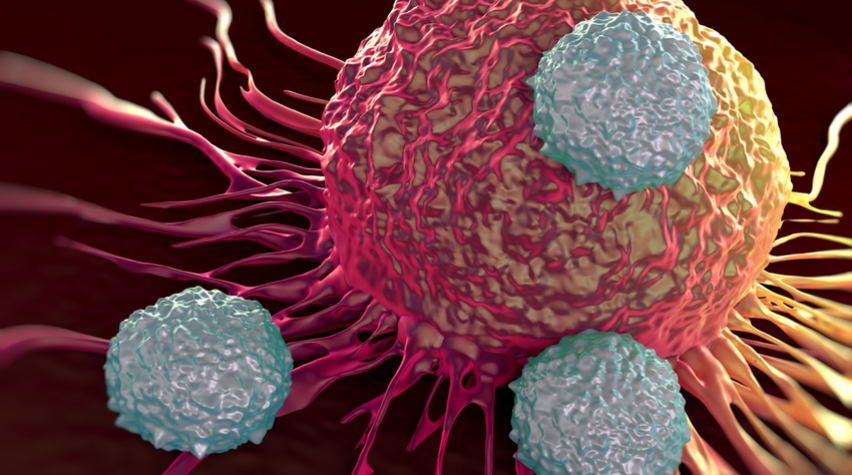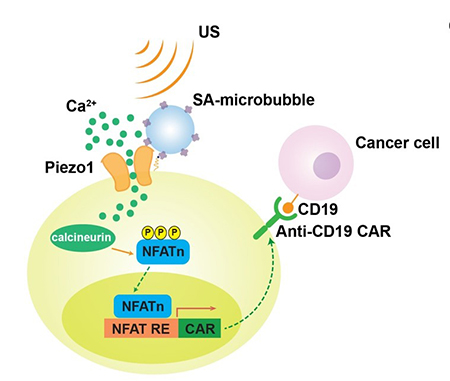
Using a noninvasive ultrasound system, researchers have successfully manipulated genetic processes in live T cells so that they recognize and kill cancer cells. The work is based on mechanogenetics, which focuses on how physical forces and changes in the mechanical properties of cells and tissues influence gene expression.
More specifically, the researchers' showed how it is possible to use a remote-controlled mechanogenetics system to engineer chimeric antigen receptor (CAR)-expressing T cells that can target and kill cancer cells. The engineered CAR-T cells have mechano-sensors and genetic transducing modules that can be remotely activated by ultrasound via microbubble amplification.
CAR-T cell therapy shows great promise, but currently the nonspecific target of CAR-T cells against nonmalignant tissues can endanger the patient. It is hoped that this work will allow greater precision in CAR-T cell immunotherapy to target solid tumors without disrupting nonmalignant tissue.

Vibrating microbubbles sound the alarm
Researchers found that microbubbles conjugated to streptavidin can be coupled to the surface of a cell, where mechanosensitive Piezo1 ion channels are expressed. Upon exposure to ultrasound waves, microbubbles vibrate and mechanically stimulate Piezo1 ion channels to let calcium ions inside the cell. This triggers downstream pathways, including calcineurin activation, NFAT dephoshorylation and translocation into the nucleus. The nucleus-translocated NFAT can bind to upstream response elements of genetic transducing modules to initiate gene expression of chimeric antigen receptor (CAR) for the recognition and killing of target cancer cells.
For more information about this work, see the researchers' published work in the Proceedings of the National Academy of Sciences.


